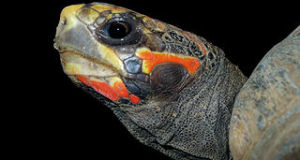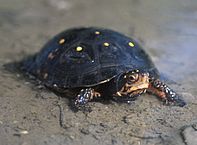 The house cricket is something of an insect oddity…at once both an adaptable, widely introduced species and a somewhat delicate captive. Native to southwestern Asia, it fares poorly in the damp conditions favored by field crickets and other North American species.
The house cricket is something of an insect oddity…at once both an adaptable, widely introduced species and a somewhat delicate captive. Native to southwestern Asia, it fares poorly in the damp conditions favored by field crickets and other North American species.
Providing a Water Source: the advantages of gels
House crickets will not survive long in damp conditions, but they do need to drink quite a bit of water, and herein lays the main problem in keeping them.
The crickets drown rapidly in standing water, and cotton or gravel-filled bowls foul quickly. Stagnant water, and mold on damp sponges or oranges (2 other common methods of providing water) supports bacteria that seems, for reasons not completely understood, to rapidly decimate cricket colonies. Misting the colony, a useful technique as regard many insects, is worse, and again will result in heavy losses.
The advent of gel-based cricket water substitutes is one of the most important recent innovations in food animal maintenance. These products save time and money by cutting down on losses. More importantly, crickets that live longer have improved chances of consuming a nutritious diet, and thus are themselves a more valuable pet food.
I use Cricket Drink and R-Zilla Cricket Calcium Drink Supplement exclusively. Both are fortified with calcium and other nutrients, and are readily consumed by crickets. No other water source is necessary. Millipedes and sow bugs will also feed upon these gel cubes, and they would be well-worth trying on scorpions and tarantulas.
A Warning: Condensation
Even when fruit and standing water is dispensed with, be sure to guard against condensation buildup. This occurs most frequently in crowded enclosures, and will wipe out your colony in short order. Adequate ventilation and roomy holding containers are of key importance in avoiding damp conditions.
Next time I’ll review some commercial cricket diets. Please write in with your own tips for keeping crickets and other food animals.
You can read about the natural history of the house cricket here.
 That Reptile Blog – Reptile, Amphibian and Exotic Pet Care and Information
That Reptile Blog – Reptile, Amphibian and Exotic Pet Care and Information


